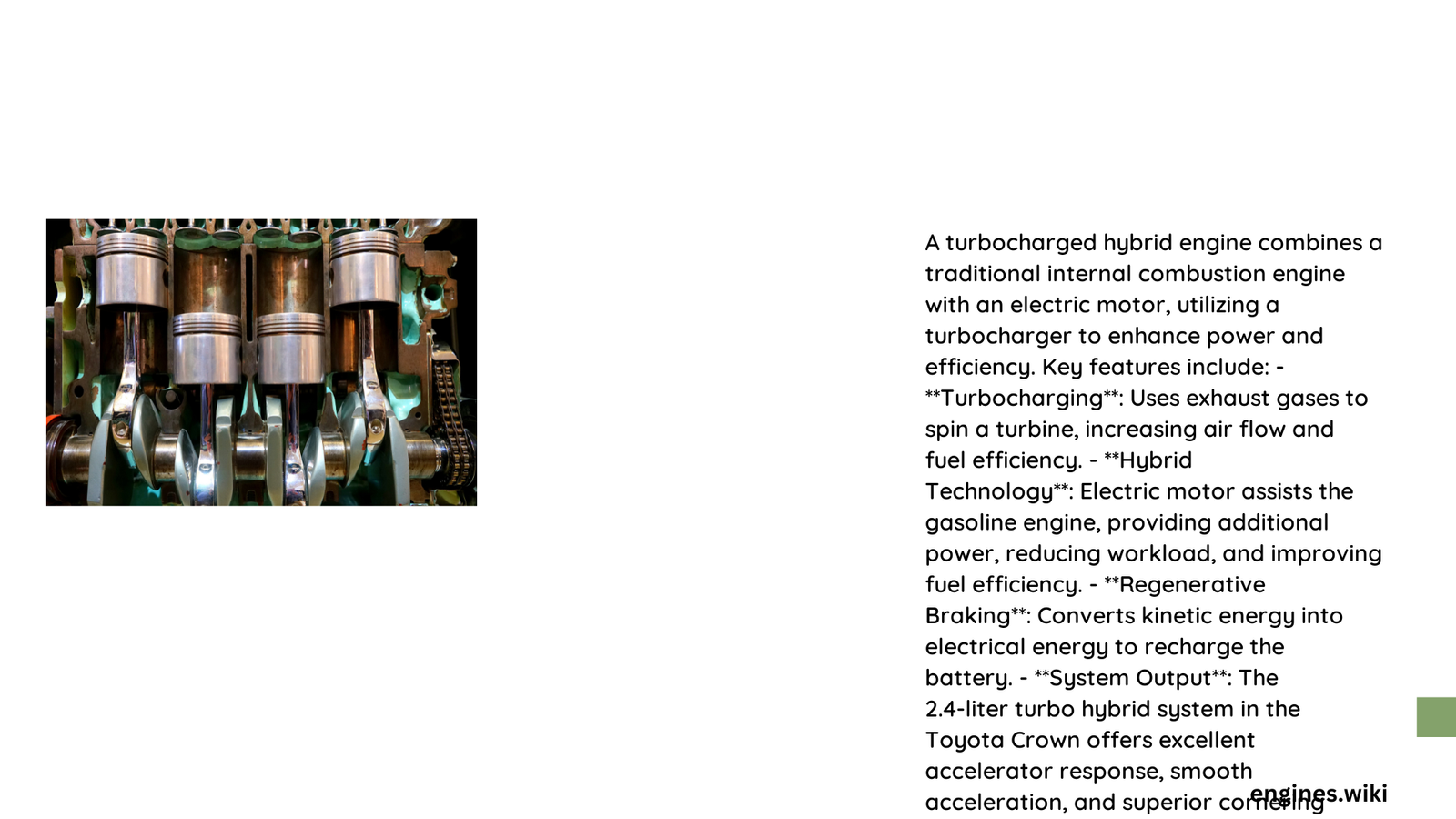A turbocharged hybrid engine represents a sophisticated automotive propulsion system that combines traditional internal combustion technology with electric power generation, utilizing turbocharging to enhance performance while integrating electric motor assistance for improved fuel efficiency and reduced emissions. This innovative powertrain technology delivers unprecedented power output, superior thermal efficiency, and remarkable energy recovery capabilities across various automotive applications.
What Makes Turbocharged Hybrid Engines Unique?
Turbocharged hybrid engines represent a groundbreaking convergence of mechanical and electrical engineering, offering unprecedented performance and efficiency. These advanced powertrains integrate multiple technological innovations to transform automotive propulsion.
Key Components of Turbocharged Hybrid Engines
| Component | Function | Performance Impact |
|---|---|---|
| Turbocharger | Compress intake air | Increases power density |
| Electric Motor | Provide supplemental power | Enhances acceleration |
| Battery System | Store electrical energy | Enables regenerative braking |
| Internal Combustion Engine | Primary power generation | Provides baseline performance |
How Do Turbocharged Hybrid Engines Generate Power?
Turbocharged hybrid engines generate power through a sophisticated multi-stage process:
- Turbocharger Compression
- Compresses intake air to increase oxygen density
- Enables more efficient fuel combustion
-
Increases overall engine power output
-
Electric Motor Assistance
- Provides instantaneous torque
- Supplements internal combustion engine performance
-
Enables energy recovery during deceleration
-
Energy Management
- Intelligent power distribution between electrical and mechanical systems
- Optimizes fuel consumption
- Reduces overall emissions
Performance Metrics of Advanced Turbocharged Hybrid Engines
Mercedes V6 Hybrid Formula One Power Unit
- Engine Displacement: 1.6 L
- Power Output: 626–768 kW
- Hybrid System Configuration:
- 120 kW MGU-K
- 90 kW MGU-H
- Two additional electric motors
Toyota Hybrid i-Force MAX Engine
- Engine Displacement: 3.5-liter V6
- Power Output: 437 horsepower
- Torque: 583 lb-ft
- Efficiency: 22 mpg combined
Technological Advantages
Turbocharged hybrid engines offer multiple technological advantages:
- Enhanced Fuel Efficiency
- Reduced fuel consumption
- Lower carbon emissions
-
Improved energy utilization
-
Superior Performance
- Increased power density
- Faster acceleration
-
Improved throttle response
-
Reduced Environmental Impact
- Lower greenhouse gas emissions
- More sustainable transportation solution
- Compliance with stringent environmental regulations
Challenges in Turbocharged Hybrid Engine Development
Despite remarkable advantages, engineers face significant challenges:
- Complex thermal management requirements
- Higher manufacturing costs
- Advanced electronic control system integration
- Battery technology limitations
Future Outlook
The future of turbocharged hybrid engines looks promising, with continuous advancements in:
- Battery technology
- Power electronics
- Materials science
- Energy management algorithms
Conclusion

Turbocharged hybrid engines represent a transformative automotive technology, bridging traditional combustion mechanics with cutting-edge electrical systems. As research progresses, these powertrains will likely become increasingly sophisticated, efficient, and environmentally responsible.
